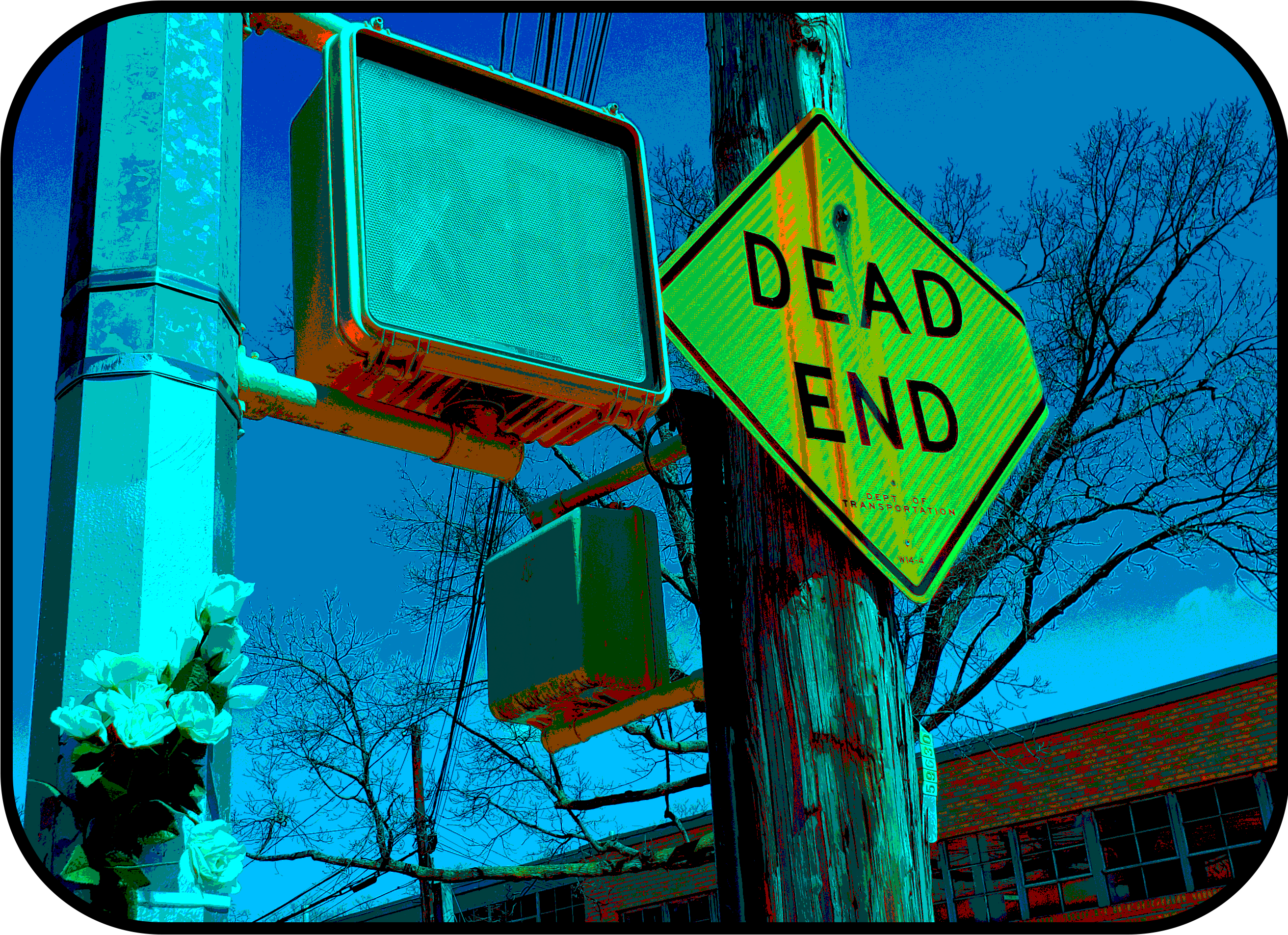By Brianna Caszatt
Background
The COVID pandemic changed so much of how I think about and live in New York City. For instance, I really started contemplating space differently—my cozy studio apartment wasn’t feeling so cozy anymore. How could I get outside more? How was outside set up (or, let’s be honest not) to let the most amount of people enjoy it? In Army of Lovers, Paul, after a weekend away from the city, says, “We live in an extreme place, but we act like it’s the most normal way to live” (p. 267). The extremes of the city used to feel like a point of pride, a la if you can make it here you can make it anywhere. But the pandemic really shone this ideology under a different light.
I needed to know: How could I be outside but not on top of other people? The dedicated park space near where I live is so limited, and the Open Streets program still has a lot of growing to do. So I found myself spending a lot of time walking through the many cemeteries of Queens. And it was from this experience that my first big digital humanities project, Mapping Cemeteries, was born. I wanted to understand the ways the city of the living intermingles with the city of the dead. I was especially drawn to cemetery spaces that have been repurposed and built over and began wondering what other aspects of death—both physical and notional—are hidden in this city we call home.
Traffic violence is an all too common experience in New York, but after a crash is cleaned up, what’s left? The violence is hidden, the infrastructure resumes its seemingly neutral existence, the streets continue to be dominated by cars, and the cycle repeats itself. Ghost bikes—bikes that have been painted white and placed near the site where a cyclist was killed—stand in opposition to this cycle. Shortly after the death of his mother, Paul says, “Every day, a person in mourning must confront the well-meaning, pitying look I saw on Donna’s face, a reminder that the losses we think we’ve assimilated are actually extraordinary events we can hardly comprehend” (p. 158). Ghost bikes are sites of memory for these extraordinary (yet all too common) events that we can hardly comprehend.
I’ve been grappling with ghost bikes over several semesters now, but all of my previous approaches to studying them have been mostly based in data (see my ArcGIS StoryMap and Leaflet map). Gathering the locations of where ghost bikes have been installed, finding out which ones are still up, comparing the locations of ghost bikes with recent crash data. What I needed to ask myself for this project is how can I approach ghost bikes from a storytelling perspective, especially when I don’t know any of these cyclists? Am I supposed to be telling the stories of the cyclists who died? I don’t really think I can, especially as a white person when a lot of cyclists killed are people of color.
Then I realized that’s not the only story, nor is it the story I have to tell. Ghost bikes ask us to remember who died there, but they also demand that we rethink our relationship to the city’s infrastructure and how much it defines and limits our movements within. They stand as monuments for those we’ve lost, but they also represent an act of love, looking toward a future with safer streets. Ghost bikes and other traffic violence memorials are there for us to bear witness, and I’ve been doing a lot of that around Queens. But it’s not enough for me as a single person to bear witness. As many people as possible need to take on this task so we can collectivize and organize for change. We have to work together to bring about that future with safer streets.
About the Game
Now, I’m not much of a gamer, nor have I ever built a game before. But when we learned about Twine, I got a feeling in my gut that this is a format through which I could encourage people to bear witness to traffic violence along with me. And I hoped that I could balance the playfulness of the tool with seriousness of the subject matter.
Ghost Streets starts on a beautiful spring day in Queens, and you have the option to enjoy the city as a driver, cyclist, or pedestrian. And all of these storylines are happening simultaneously, so as the driver you encounter the cyclist and the pedestrian, and as a cyclist or pedestrian you encounter the driver (albeit with a very different perspective on these encounters).
From all modes of transport, you also encounter different sites of memory related to traffic violence, including ghost bikes. And at each encounter I present you with two options: you can stay and examine the memorial or ignore it and go on about your day. There are five possible locations of traffic violence where you can bear witness. And they are all based on real locations in Queens I have visited, though I have taken liberties with how they are located in relation to one another in the game world. I’ve tried to balance respecting the real lives lost while also acknowledging the urgency of the problem and that it exists in every neighborhood in every borough. If you choose to ignore a memorial, I immediately place more in your path, as I don’t think they can actually be ignored. As Zach in Army of Lovers says, “The world wants to be heard, smelled, sensed, known. There is no escaping it” (p. 272). The same is true of these memorials. There’s something very familiar in them, and when we see them, I think at least a part of us knows they are sites of death.
When you choose to be a driver, even if you opt to bear witness to these memorials, I don’t fully let you. I don’t think you can properly bear witness to traffic violence from this point of view. (To represent this in the game, I’ve included images on each page where you bear witness at a memorial, but from the car’s POV, the images are in black and white instead of in color.) Indeed, there are several instances in the game where you the driver think what you’re doing is good and harmless, when in reality it is not. So I encourage you to revisit these sites by foot or bike instead. Cyclists and pedestrians bear witness to these sites in the same way in the game. Their experiences of the road may differ, but ultimately I think they both know cars are the problem, and they can both recognize what is so tragic about a memorial on the side of the street, be it for cyclist or pedestrian. And it’s here that I really forced myself to examine these sites closely and capture my experiences of them.
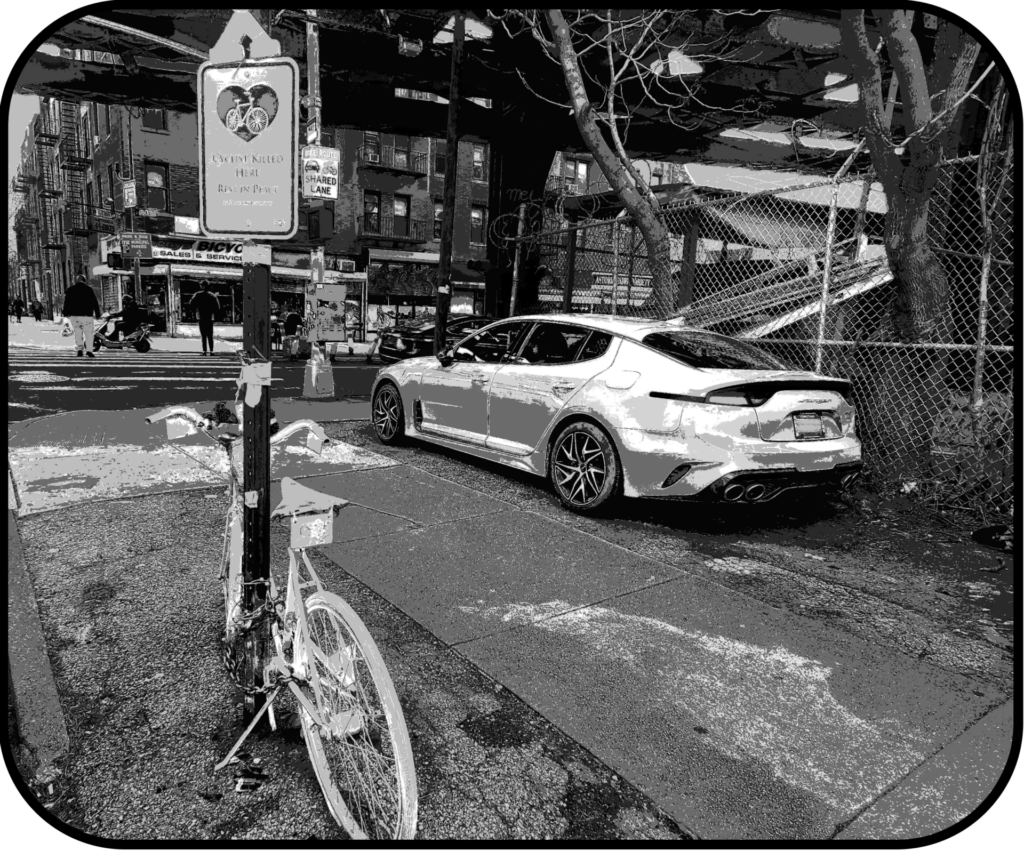
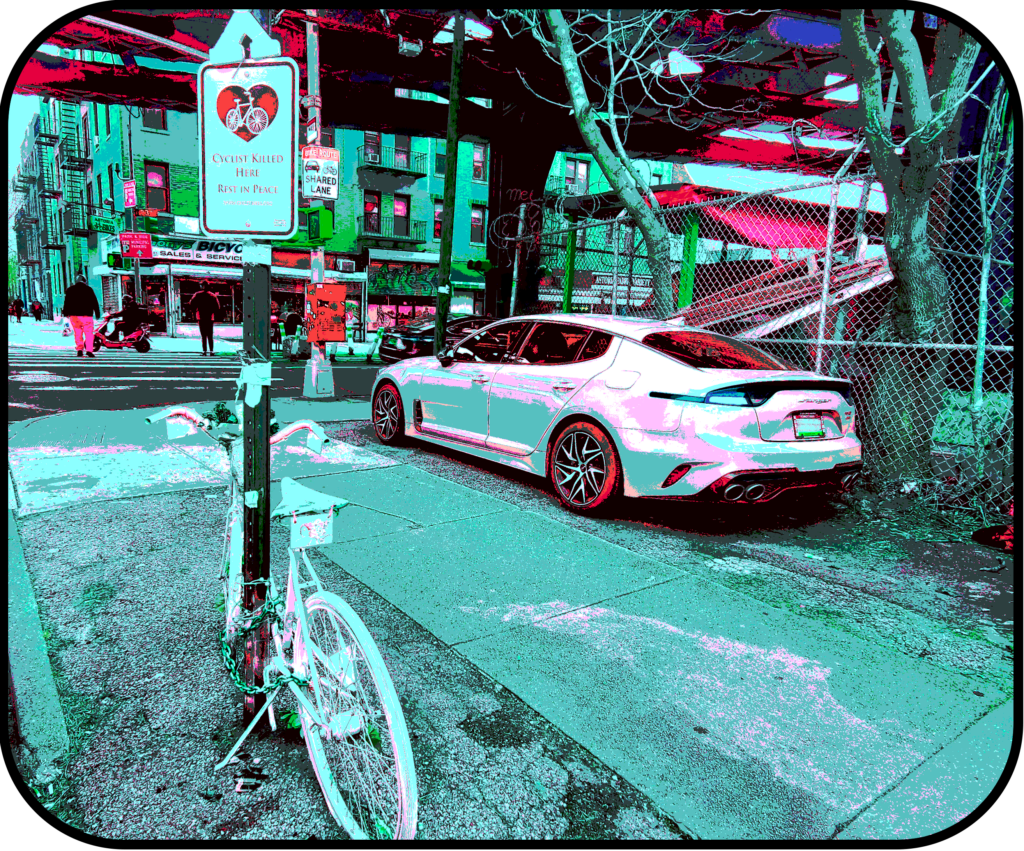
I’ve played with repetition throughout the game, as traffic violence is a cycle—crash, clean up, repeat—and we are forced to go on as if the streets are safe even when all data and experiences tell us otherwise. Also, there are aspects of street design that are dangerous no matter how you travel through them—be you driver, cyclist, or pedestrian. Indeed, the game has no end and no way to win. It is also a loop. At best, even if you bear witness at these sites of memory, I send you back home to the beginning of the game, and you start all over again. Traffic violence is structural, and structural problems cannot be solved through individual choice or responsibility. Bearing witness is only a first step, not a solution in and of itself.
Sources and Inspiration
The encounters the cyclist and pedestrian have with cars are all things that I have personally experienced, including with the car repair shop (see my Twitter thread) and people putting thumbtacks in the Sunnyside bike lane.
The five traffic violence encounters in the game are based on the following locations.
Memorials to the Left
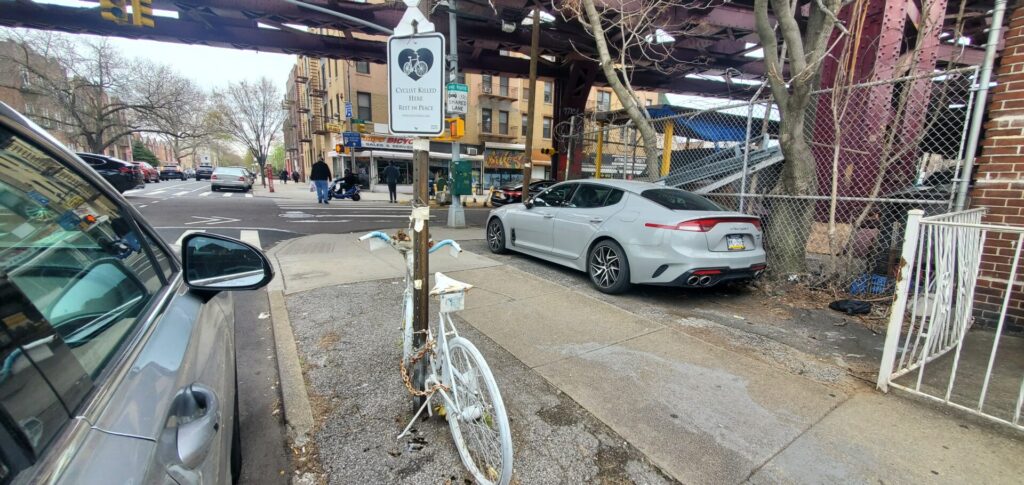
- Xellea Samonte’s ghost bike on 25th Street at 23rd Avenue
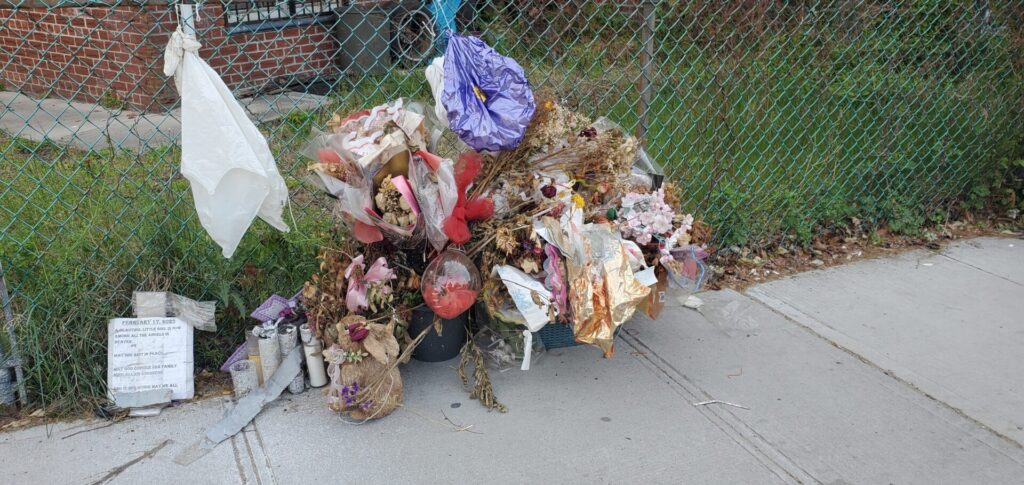
- Dolma Naadhun’s traffic violence memorial on Newtown Avenue at 45th Street
Memorials to the Right
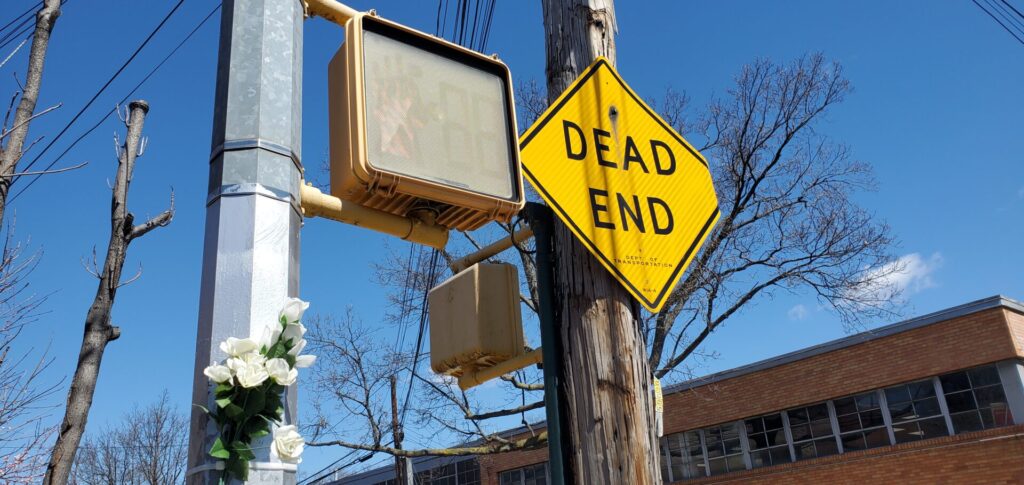
- Unidentified plastic flowers on two out of four crosswalk posts at 31st Avenue and 60th Street
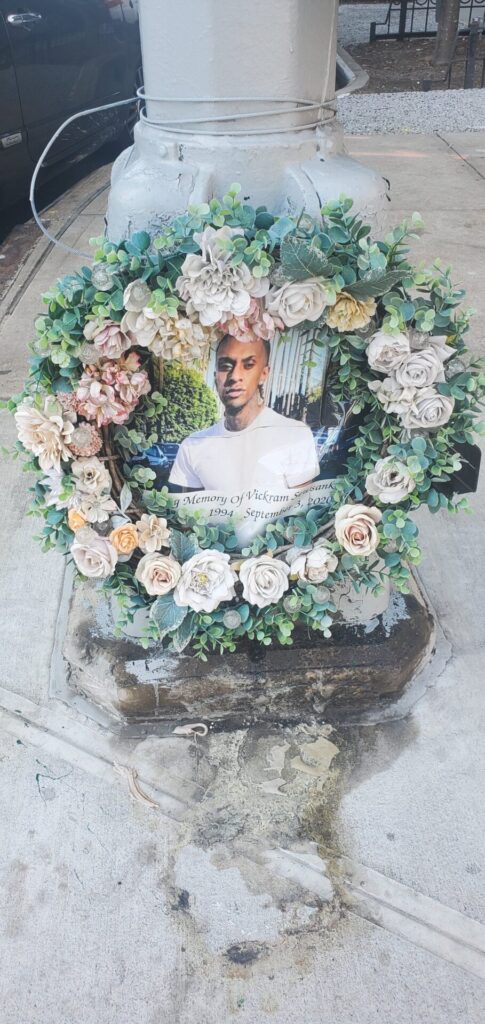
- Wreath and picture for Vickram Sewsankar on Borden Avenue and 2nd Street (When I searched for his story, I had expected him to have been a pedestrian killed at this intersection, but I learned that he was shot and killed over a parking dispute, which I think is still related to traffic violence and representative of the problems we face with streets being dominated by cars.)

- Salvador Chairez-Rodriguez’s ghost bike on 31st Avenue at 51st Street
I also read and was inspired by Jody Rosen’s Two Wheels Good: The History and Mystery of the Bicycle (2022) as I worked on this project.
All of the audio files I used in this game came from from freesound.org:
- chirping bird
- door opening
- pumping up bike tires
- getting in car and starting it
- breaking glass
- car speeding by
- car breaking
- car pulling out
- car honking (long honking and short honking)
- bus pulling up and honking
- truck pulling up and honking
- man yelling
I did do some audio editing in Audacity.
